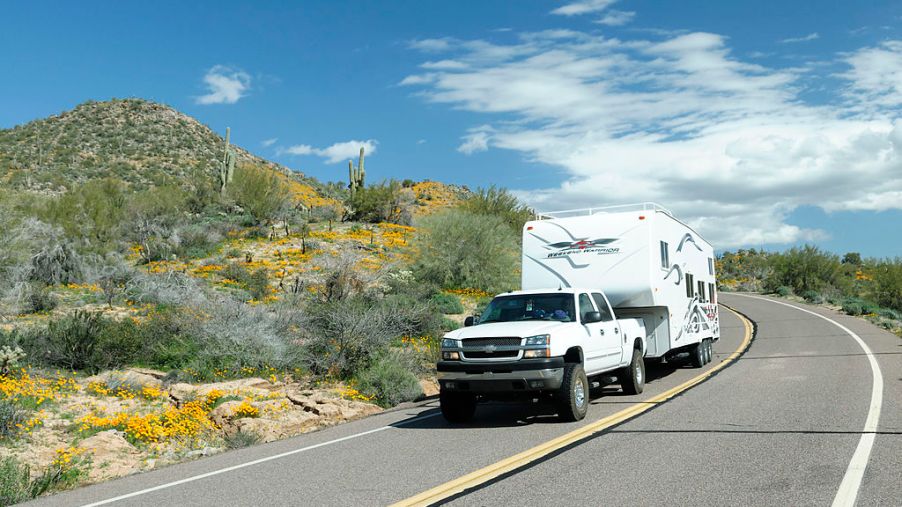
How Much More Can a Dually Truck Tow?
Today’s consumers are turning toward trucks for more than just doing their work. More and more often, people are choosing pickup trucks as their everyday family vehicle. Trucks offer the ability to handle off-roading, towing, and carrying loads while also offering comfort and versatility. Almost any pickup can handle those basic jobs. But for those who still need a work truck, do you know exactly what you need to get the job done?
Heavy-duty pickup trucks are making a comeback, take the 2020 Chevrolet Silverado HD and the 2020 GMC Sierra HD for example. Both trucks come in a single rear-wheel (SRW) or a dual rear-wheel (DRW) option. Not sure how many wheels you need? Let’s take a look at the differences between the two.
Technical advantages of a dually truck
A DRW truck, also known as a dually truck, contains two pairs of rear wheels for a total of six wheels on the truck. The rear wheel pairs sit side-by-side and a dually truck’s body is, therefore, wider and has a bigger fender to cover both wheels.
The extra two wheels allow the truck to have twice the amount of contact with the road in the rear, giving you more power and increased stability since the weight is more spread out.
Additionally, a dually truck’s rear axle is designed in a “full floating” configuration. This allows the bearing hubs to carry the truck’s weight, instead of the axle shaft, which can then simply focus on transmitting torque, again giving you more power than in an SRW truck.
How much more power do you get with a dually truck?
While you can get a heavy-duty pickup truck in an SRW option, if you need the most power possible, then a dually is your best choice. Looking at the 2020 Silverado 3500 HD and the 2020 Sierra 3500 HD, you get 2,215 lbs more in payload capacity with the DRW option than with the SRW, and an astounding 5,500 lbs more in conventional towing.
To truly max out your towing, adding a gooseneck or fifth wheel to your 2020 Silverado 3500 HD DRW gives you 14,000 lbs more towing than with the SRW option. The numbers don’t lie: if you need the most power possible out of your next truck, then you’d be silly not to seriously consider getting a dually.
Are there any drawbacks?
In addition to getting more towing and payload and overall maxing out your truck’s potential, dually trucks also offer more stability when you’re hauling. But with all of the pros, there are bound to be a few cons. A dually truck has a less comfortable ride when you’re not hauling a load, since the rear wheels are offering more power than you need without a load.
A dually truck is obviously larger than a non-dually, so you’ll generally have a harder time parking. Additionally, you lose out in fuel economy driving a dually around, so if you’re looking for something you can take through cities as your everyday ride, then a dually might not be the best option for your wallet. Along the same lines, a dually is more expensive upfront than an SRW option.
The bottom line is that if you need a work truck that can handle everything you throw at it, then a dually might be the option for you. These trucks can handle the biggest RVs and campers, you can fill up the bed to its max payload and feel comfortable driving, and you can handle most any terrain confidently. If that sounds like what you need, then we think you should go for it.


